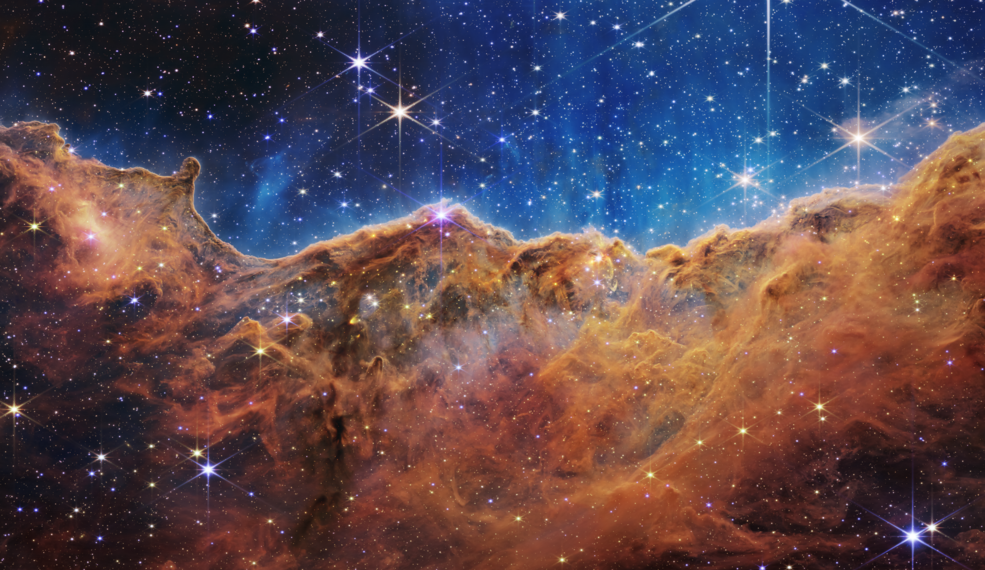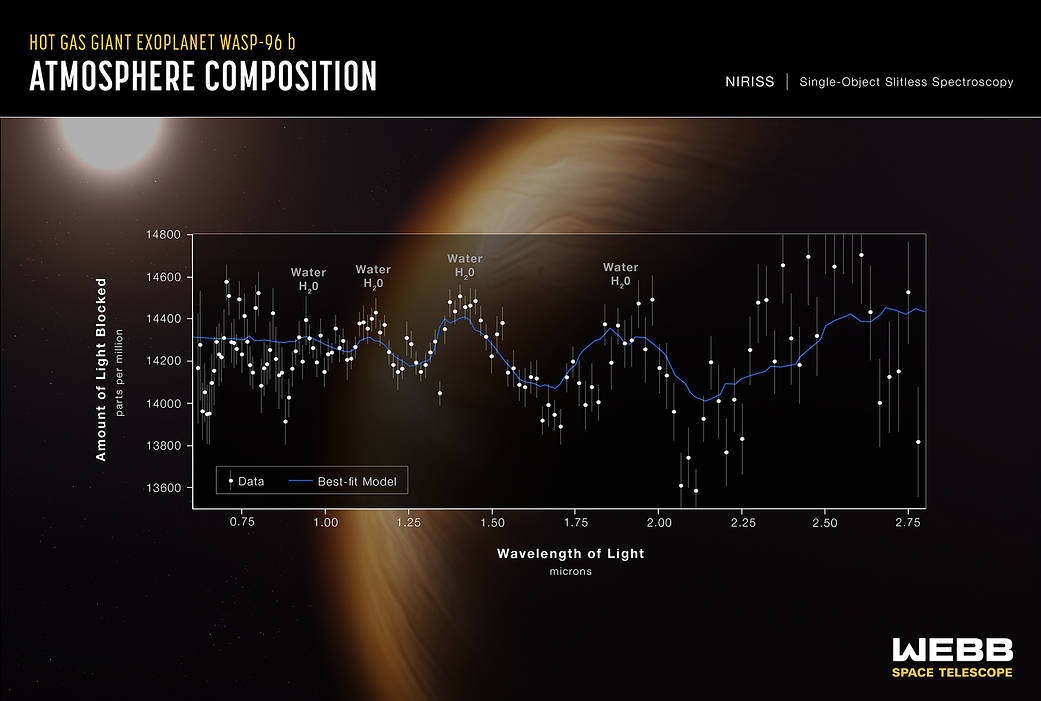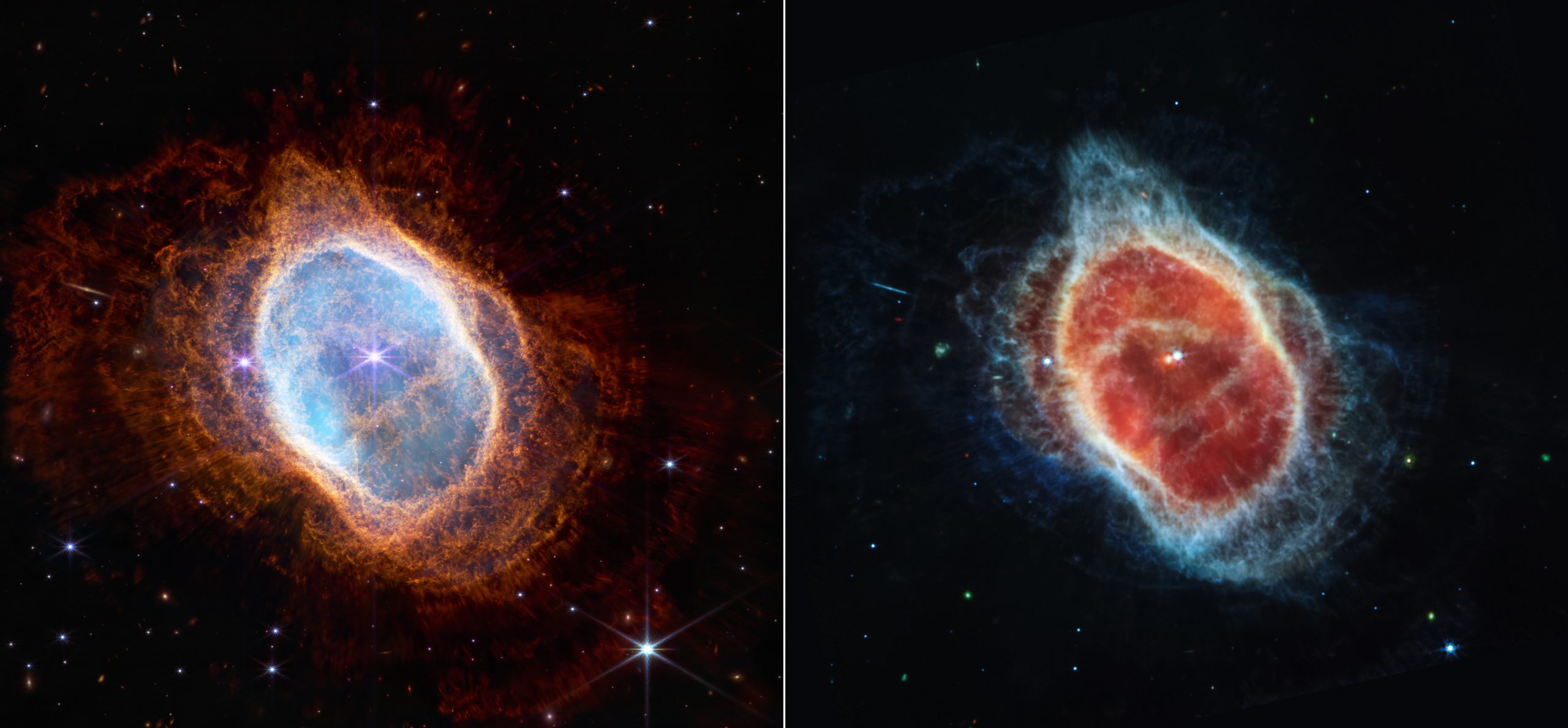The first images from NASA’s James Webb Space Telescope were published on July 12, 2022, proving the telescope’s unique capabilities and changing the way we explore space. The images of the JWST included a spectrum analysis of a distant exoplanet and four stunning images of the ancient Universe, including the Carina Nebula, the South Ring Nebula, Stephan’s Quintet, and SMACS 0723.
As promised, four more full-color images have been released for the telescope’s debut following the presentation of the deepest image of the Universe taken ever, which essentially offers humankind a view of the Universe as it was some 13 billion years ago, or other words a look into the past.
Prepare to have your mind blown.
Carina Nebula

Image Credits: NASA, ESA, CSA, and STScI
Nearly 7,600 light-years away in the constellation of Carina lies the Carina Nebula, one of the brightest and largest nebulae in the sky. Stars form in nebulae, which are stellar nurseries. Several times bigger than the Sun, numerous massive stars are found in the Carina Nebula.
Webb’s image reveals previously hidden baby stars behind the dust and gas on this nebula’s “cosmic cliffs.” In the new view, the early stages of star formation can be seen for the first time. In the case of an individual star, this period lasts only between 50,000 and 100,000 years.
WASP-96b (spectrum)

Although this is not a photograph of the ancient Universe, it is one of Webb’s most significant images. There is a giant gas giant planet called WAsp-96B far away from our Solar System. The planet orbits its star every 3.4 days, nearly 1,150 light-years away. The discovery of this planet was announced in 2014 and it has about half the mass of Jupiter.
The spectrum analysis of Webb confirms the unmistakable presence of water, indications of haze, and cloud evidence (which was ruled out previously). An exoplanet spectrum with this level of detail has never been observed before.
Furthermore, Webb captured a light curve showing the brightness of WASP-96 b’s parent star over time. A planet’s light dims as it transits a star’s disk. In spite of the fact that WASP-96 b’s characteristics were known, Webb’s measurements provide more detail. New planets can also be discovered using transits.
South Ring Nebula

Known as the “Eight Bangs” Nebula, the South Ring Nebula is an expanding cloud of gas surrounding a dying star. Approximately 2,500 light-years from Earth, it is almost half a light-year across.
The faint, dying star in the Webb image is ejecting gas and dust, which the telescope could observe with unprecedented detail. Webb reveals dust covering the dying star for the first time. The delicate gaseous layers will dissipate into space after thousands of years.
Stephan’s Quintet

Stephan’s Quintet lies in the constellation Pegasus approximately 290 million light-years away. This galaxy group is notable for being the first compact group of galaxies ever discovered. A cosmic dance of repeated close encounters is taking place among four of the five galaxies of the Quintet.
The Stephan’s Quintet image by Webb shows five galaxies, of which four are interacting. In the foreground is the galaxy on the left. With a diameter of about a fifth of the Moon, this mosaic is Webb’s largest image. There are more than 150 million pixels in it, and nearly 1,000 separate image files make up the image.
This galaxy group reveals details never seen before with Webb’s powerful infrared vision and extremely high spatial resolution. Starburst regions of new star birth can be seen in the image, along with bright clusters of millions of young stars. Due to gravitational interactions, several galaxies are producing sweeping tails of gas, dust, and stars.
An even more dramatic scene was captured by Webb when one of the galaxies, NGC 7318B, was caught passing through the cluster, sending shock waves through the cluster.
The team behind the James Webb space telescope also captured two photographs of Jupiter, which were released quietly in a commission report. You can view the images here.
ESA, NASA, and the Canadian Space Agency are leading the Webb Space Telescope mission.
The James Webb Space Telescope Image Gallery can be accessed here.
Join the discussion and participate in awesome giveaways in our mobile Telegram group. Join Curiosmos on Telegram Today. t.me/Curiosmos
The post Here are the James Webb Space Telescope Images of the Ancient Universe appeared first on Curiosmos.
Source: Curiosmos
 Archeology News Archeology News
Archeology News Archeology News






